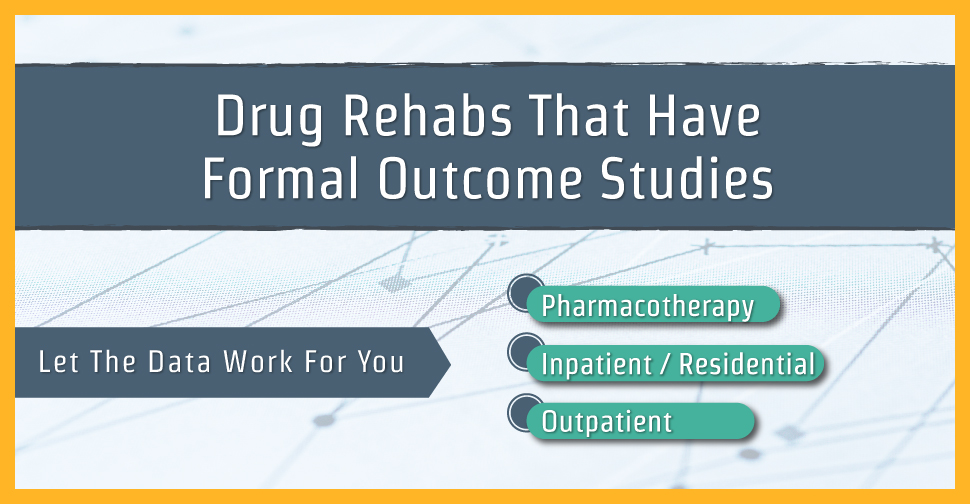
When it comes to evaluating the effectiveness of addiction treatment programs, there have been three major formal outcome studies conducted on the national level. These are the Drug Abuse Treatment Outcome Study (DATOS), the Treatment Outcome Prospective Study (TOPS), and the Drug Abuse Reporting Program (DARP). Meanwhile, just one comprehensive study has been carried out on the state level, the California Drug and Alcohol Treatment Assessment (CALDATA). Numerous smaller-scale outcome studies exist as well, but these four are commonly cited as the major ones.
Treatment Modalities
While they differ in terms of the exact details, most studies seek to measure treatment effectiveness by looking mainly at different kinds or “modalities” of drug rehab. The major formal outcome studies usually divide up these modalities as follows:
- Pharmacotherapy: This treatment modality involves the use of carefully selected medications to aid in recovery. One of the first and most common is methadone. In methadone maintenance treatment, the individual suffering from opioid addiction is given the medication over a long period of time. At the right doses, methadone helps to ease withdrawal symptoms and suppress cravings.
- Inpatient or Residential Programs: In this kind of drug rehab, the sufferer of substance abuse undergoes recovery at a special treatment facility, becoming a 24/7 “resident” in a community of treatment specialists and other individuals in recovery. The goal is to promote an overall change in habits and lifestyle.
- Outpatient Programs: In this rehab setting, the drug-addicted individual receives treatment at a special facility, but doesn’t live there as a resident. Instead, she or he is free to go home at the end of the day.
The Importance Of Treatment Length
One important discovery these studies made was that effective treatment outcomes depend not only on the kind of treatment, but also even more heavily on the length or duration of treatment. For instance, a five-year follow-up study of DATOS data showed that among patients recovering from cocaine addiction, those who had attended treatment for six months or more were less likely to relapse and more likely to gain full-time employment than those who had dropped out or enrolled only for short-term treatment. This was true both for inpatient and outpatient forms of rehab.
In other words, the question is not whether inpatient programs are better than outpatient programs across the board. Rather, it’s about finding the best potential long-term fit for the individual given his or her particular needs and characteristics.
A Combined Approach
The other major insight that these and other outcome studies have given us is that there’s no one form of rehab that, when used in isolation, is better than the rest. Rather, for the vast majority of patients, a combined approach is the most effective approach.
For example, a 1993 study cited by the National Institute on Drug Abuse compared outcome effectiveness among patients solely in methadone maintenance programs, versus patients undergoing methadone maintenance in combination with counseling and behavioral therapy. The researchers found that the latter, multi-dimensional approach had vastly better outcomes for a larger percentage of the patients studied.
Let The Data Work For You
 While it is tempting to let the data do all the talking, ultimately the decision on which program is the best for you or your loved one comes down to your individual needs.
While it is tempting to let the data do all the talking, ultimately the decision on which program is the best for you or your loved one comes down to your individual needs.
Contact us today at DrugRehab.org for a personal consultation, and we’ll make the data work for you.
